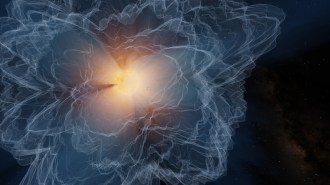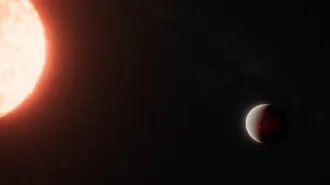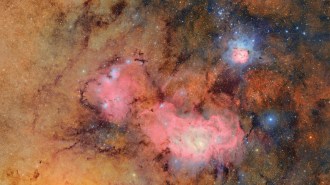An astrophysicist honors citizen scientists in the age of big data
The Crowd and the Cosmos examines the role of amateurs in science
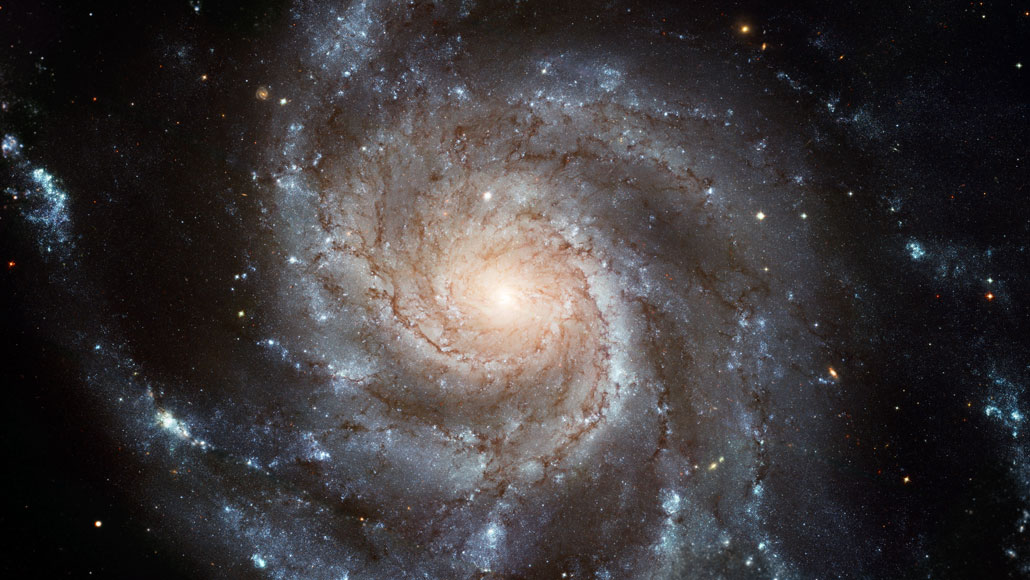
The Pinwheel Galaxy, shown in this Hubble Space Telescope image, is an example of a spiral galaxy. In 2007, the Galaxy Zoo project asked citizen scientists to classify galaxies based on shape — spiral or elliptical.
ESA, NASA
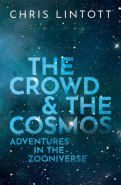
The Crowd and the Cosmos
Chris Lintott
Oxford Univ., $24.95
Astrophysicist Chris Lintott had a problem back in the mid-2000s. He wanted to know if the chemistry of star formation varies in different types of galaxies. But first he needed to sort through images of hundreds of thousands of galaxies to gather an appropriate sample to study. The task would take many months if not longer for one person, and computers at the time weren’t up to the challenge. So Lintott and colleagues turned to the public for help.
The group launched Galaxy Zoo in 2007. The website asked volunteers to classify galaxies by shape — spiral or elliptical. Interest in the project was overwhelming. On the first day, so many people logged on that the server hosting the images crashed. Once the technical difficulties were resolved, more than 70,000 image classifications soon came in every hour. And as Lintott would learn, amateurs were just as good as professionals at categorizing galaxies.
Galaxy Zoo’s success helped awaken other scientists to the potential of recruiting citizen scientists online to sift through large volumes of all sorts of data. That led to the birth of the Zooniverse, an online platform that lets anyone participate in real science. Projects on the platform ask volunteers to do everything from digitizing handwritten records from research ships to identifying animals caught on camera to sorting through telescope data to find signs of exoplanets.
In The Crowd and the Cosmos, Lintott, who cofounded the Zooniverse, shares his experiences with citizen science. The book is not a recounting of the history of Galaxy Zoo and the Zooniverse. It’s more of an ode to citizen science. Lintott celebrates the successes, exploring the ways amateurs can contribute to science and how that contribution might change as artificial intelligence catches up with some kinds of human smarts.
By no means was Galaxy Zoo the first citizen science project. As Lintott explains, the roots of citizen science go back to at least the 18th century. Even Charles Darwin benefited from observations contributed by a wide network of people. The Crowd and the Cosmos focuses on the importance of citizen scientists in the age of big data and largely sticks to what Lintott knows best: astrophysics and astronomy.
The book peruses a range of space topics, offering up-to-date, accessible overviews of exoplanets, supernovas, galaxies and dark energy, the mysterious force that is causing the universe’s expansion to accelerate. Lintott is a knowledgeable and witty guide. His humor helps drive the story and even pops up in numerous footnotes. After describing how he often ends talks with the idea that, far into the future, the universe will likely “become a nearly empty void, a vast sea of space expanding forever into yet more nothingness,” he quips: “I do like to send an audience home happy.”
Just as the universe’s future may seem bleak, so too might the future of some forms of citizen science. When Lintott first enlisted volunteers to help wade through a deluge of galaxy images, computers were terrible at tasks that required pattern-recognition skills. But times have changed. Machine-learning algorithms’ abilities on visual tasks are improving, and researchers are on the verge of automating many time-intensive, often tedious jobs. In fact, some Zooniverse projects today ask citizen scientists to classify data as a way to amass large datasets to help train machine-leaning algorithms. As artificial intelligence continues to get better, will there come a time when citizen scientists’ services are no longer needed?
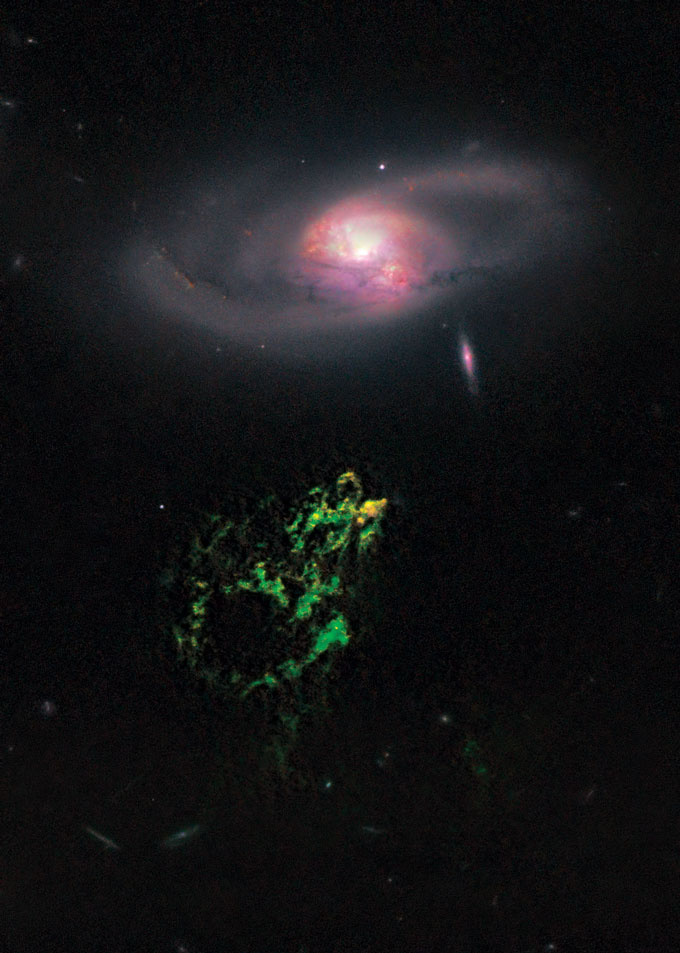
Lintott doesn’t think so. He predicts humans and machines will keep working side by side, and at least for the foreseeable future, citizen scientists will still be needed to help train machine-learning algorithms. But he also envisions these volunteers making other important contributions. For instance, he argues that when looking through seemingly endless piles of images or historical records or even graphs of data, these amateurs are in the best position to notice something rare or unusual; experts tend to be too focused on the task at hand, and computers might not be trained to identify something out of the ordinary.
That was the case in 2007 when a volunteer in the Netherlands named Hanny van Arkel found a strange blob in an image and implored scientists to investigate. Dubbed Hanny’s Voorwerp (Dutch for “object”), the blob is now known to be a large gas cloud still glowing after being hit by a jet of radiation from a nearby galaxy’s black hole (SN: 12/23/17 & 1/6/18, p. 5). Researchers have learned that such gas clouds can be indicators that a now-quiet galaxy was active not too long ago (SN Online: 4/24/15).
Lintott’s enthusiasm for citizen science — and his admiration of the talents and tenacity of citizen scientists — is inspiring. By the end of the book, I was ready to sign up for some projects in the Zooniverse.
Buy The Crowd and the Cosmos from Amazon.com. Science News is a participant in the Amazon Services LLC Associates Program. Please see our FAQ for more details.
